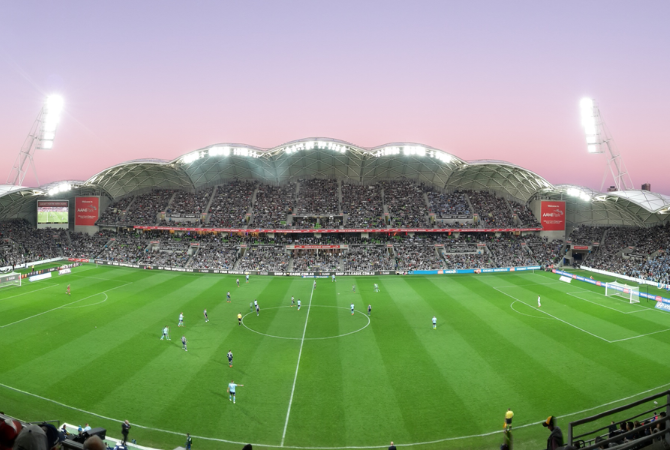Sydney FC is again the most widely supported A-League club ahead of the new 2025-26 A-League season

New research from Roy Morgan shows Sydney FC topping the 2025 Roy Morgan A-League club supporter ladder with 686,000 fans and over 100,000 more fans than any other club in the league.
Sydney FC has been the most successful club in the A-League Men winning 5 Championships and 4 Premiers Plates since the league began 20 years ago in 2005.
There’s a close contest for second place between the Brisbane Roar and Melbourne Victory. The Roar has 556,000 supporters and is just ahead of the Melbourne Victory with 531,000 supporters.
The Victory have been the second most successful club in the A-League Men winning 4 Championships with their most recent win in 2018, just ahead of the Roar with three wins, but the Roar have not tasted success for over a decade since winning in 2014 and haven’t won a final for eight years since 2017.
In fourth place overall are Adelaide United with 404,000 supporters, followed by Perth Glory with 360,000 supporters and current A-League Men’s Champions Melbourne City with 292,000 supporters.
A-League Club Supporter Ladder 2025

Source: Roy Morgan Single Source Australia, July 2024 – June 2025, n=67,653. Base: Australians 14+.
*Auckland FC and Wellington Phoenix support only includes Australian-based supporters.
3.7 million Australians now support an A-League club
Over one-in-seven Australians, 3.7 million people (16.1%), now support an A-League club and almost 1.6 million Australians (6.8%) watch the A-League on TV.
However, a much larger 5.6 million (24.5%) have watched any soccer match on TV which includes overseas leagues such as the English Premier League and Spanish La Liga as well as international tournaments including the FIFA World Cupa and FIFA Women’s World Cup.
A look at who engages with the A-League shows club support is highest among Millennials*, now aged 30-44 at 20%, Generation X, now aged 44-59 at 18.4%, and Generation Z, now aged 14-29, at 17.8%. A-League TV viewership is highest for Generation X at 7.9%, just ahead of Millennials at 7.2% and when it comes to attending a soccer match, Millennials and Generation Z lead the way at 5.6%.
Roy Morgan Industry Communications Director Julian McCrann says:

“Now one-in-seven Australians, some 3.7 million people, profess support for an A-League club, an increase of over 100,000 (+3%) since 2022. Since 2022 Auckland FC, which had its first season in 2024-25, and won the Premiers Plate, has replaced former club Western United in the league.
“The most widely supported club in the league is again based in Australia’s largest city. As well as being the A-League’s most widely supported club Sydney FC is also the most successful club in A-League history – winning five A-League Men’s Championships (2006, 2010, 2017, 2019 & 2020) and with a league leading 686,000 supporters – more than 100,000 in front of any other club.
“There’s a close contest for the second most supported club between the Brisbane Roar, with 556,000 supporters, and Melbourne Victory, with 531,000 supporters. The Victory is the second most successful club in A-League Men’s history with four Championships (2007, 2009, 2015 & 2018), just ahead of the Roar with three Championships (2011, 2012 & 2014).
“Importantly, success matters – the two clubs to increase their supporter bases by the most in the last five years since 2020 – the Central Coast Mariners and Melbourne City – have shared the last three A-League Men’s Championships in 2023 & 2024 (Mariners) and 2025 (Melbourne City).
“In addition, the Central Coast Mariners which rejoined the A-League Women’s in 2023, after leaving the competition after the 2009 season, won the A-League Women’s Championship in 2025 for the first time while Melbourne City are the current back-to-back A-League Women’s Premier.
“The Central Coast Mariners with 197,000 supporters, have more than doubled their supporter base since 2020, up by 116,000 (+142.5%) after winning back-to-back A-League Men’s Championships in 2023 and 2024. Melbourne City with 292,000 supporters, have significantly increased their supporter base since 2020, up 127,000 (+77%) and are the current A-League Men’s Champions for 2025.
“Looking forward the Socceroos are set to play in the 2026 World Cup in USA/ Mexico/ Canada next year and Australia is the host country for AFC Women’s Asian Cup in March 2026 at which the Matildas are one of the tournament favourites. The Matildas last won the Asian Cup back in 2010.
“The challenge for A-League clubs over the next few years is to find a way to connect with the millions of Australians who love their football but don’t presently engage with the A-League – many of whom will be paying close attention to the fortunes of the Socceroos and Matildas as they face important tournaments over the next year.”
Roy Morgan Enquiries
Office: +61 (3) 9224 5309
askroymorgan@roymorgan.com
Related research findings
View our extensive range of Sport profiles and reports, including A-League Viewers, NRL supporters, AFL supporters and supporters of various A-League clubs including Sydney FC, Melbourne Victory, Melbourne City, Brisbane Roar, Perth Glory, Adelaide United and Central Coast Mariners.
Compiled with data from Roy Morgan’s Single Source survey (the largest of its kind in the world, with 60,000 respondents p.a.), these ready-made profiles provide a broad understanding of the target audience, in terms of demographics, attitudes, activities and media usage in Australia.
Photo by Paladisious, “2015 A-League Grand Final AAMI Park panorama,” Wikimedia Commons, licensed under CC BY-SA 3.0 and GFDL.
*Roy Morgan Generations
Each generation denotes a specified period of 15-20 years in which people were born. The years that relate to each generation are as follows: Interwar (born pre-1946); Baby Boomers (born 1946-1965); Generation X (born 1966 - 1980); Millennials (born 1981 - 1995) & Generation Z (born 1996 - 2010).
In 2025 these generations correspond to the following ages: Interwar (79+yrs old); Baby Boomers (59-79yrs old); Generation X (44-59yrs old); Millennials (29-44yrs old) and Generation Z (14-29yrs old).
About Roy Morgan
Roy Morgan is the largest independent Australian research company, with offices in each state of Australia, as well as in the United States and the United Kingdom. A full-service research organisation specialising in omnibus and syndicated data, Roy Morgan has over 80 years’ experience in collecting objective, independent information on consumers.
Margin of Error
The margin of error to be allowed for in any estimate depends mainly on the number of interviews on which it is based. Margin of error gives indications of the likely range within which estimates would be 95% likely to fall, expressed as the number of percentage points above or below the actual estimate. Allowance for design effects (such as stratification and weighting) should be made as appropriate.
| Sample Size | Percentage Estimate |
| 40% – 60% | 25% or 75% | 10% or 90% | 5% or 95% | |
| 1,000 | ±3.0 | ±2.7 | ±1.9 | ±1.3 |
| 5,000 | ±1.4 | ±1.2 | ±0.8 | ±0.6 |
| 7,500 | ±1.1 | ±1.0 | ±0.7 | ±0.5 |
| 10,000 | ±1.0 | ±0.9 | ±0.6 | ±0.4 |
| 20,000 | ±0.7 | ±0.6 | ±0.4 | ±0.3 |
| 50,000 | ±0.4 | ±0.4 | ±0.3 | ±0.2 |



